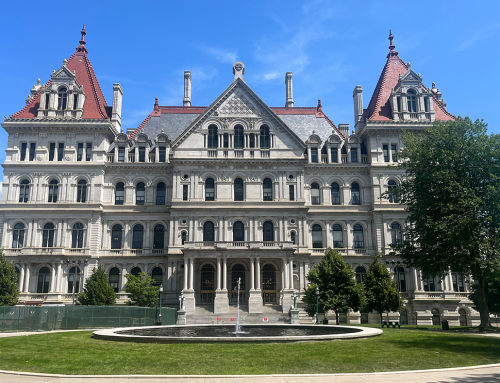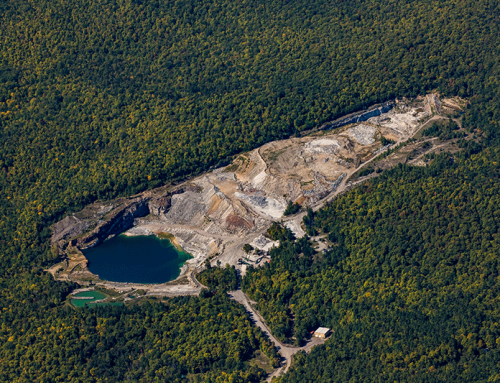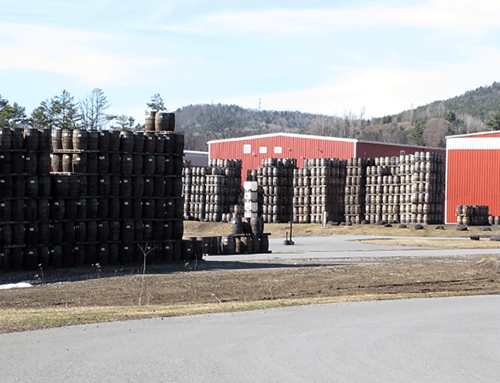The Lake George Park Commission voted this week to begin a new mandatory boat inspection and decontamination program to control invasive species.
Protect the Adirondacks applauds the new mandatory boat inspection and decontamination program established by the NYS Lake George Park Commission (LGPC) to prevent the transport and introduction of aquatic invasive species (AIS) into Lake George. The LGPC voted on January 28, 2014 to begin a new program starting on May 15, 2014. The LGPC has held a series of public hearings on this new law.
See a full PROTECT press release.
Lake George is one of the most prominent lakes in the eastern U.S. It is known internationally for its high water quality, clarity, and scenic beauty. This new boat control program should serve as a model for state management of aquatic invasive species across New York.
AIS infestation is one of the major threats facing the ecological health and economy of Lake George and the Adirondack Park. AIS can rapidly change the ecology of a lake, wetland, stream or river as well as significantly impair and diminish recreational enjoyment. The key vector for spreading AIS is motorboats.
A key part of this program is that it is strongly supported by the local governments around the lake. Lake George Village Mayor Bob Blais, Lake George Town Supervisor Dennis Dickinson, Town of Bolton Supervisor Ron Conover, and Town of Queensbury Supervisor John Strough were all strong supporters of bold action by the LGPC to protect the lake.
Two of the most damaging AIS are in close proximity to Lake George and Adirondack Park in the Great Lakes and Finger Lakes, including quagga mussels (Dreissena bugensis) and hydrilla (Hydrilla verticillata). Both of these AIS have wrought tremendous damage in areas of the U.S. where they have not been controlled, causing billions of dollars in negative economic impacts. The main vector for spreading AIS to Lake George is the transport of motorboats for public recreation.
Lake George has been trying to control Eurasian watermilfoil (myriophyllum spicatum) since the 1980s and has had a enormous project to control the Asian clam. Prevention is a more successful long-term strategy than direct management when dealing with invasive species because it’s very difficult to eradicate AIS once established in a water body. It’s far cheaper to focus efforts on interdiction and prevention than direct management. It’s also much better for the ecological health of a water body to prevent an AIS infestation, rather than try and remove AIS once established.The majority of sites infested with Asian clams in Lake George are boat launches or locations with high levels of motorized boat traffic. Over 15,000 boats use Lake George each year; over 5,000 transitory boats purchase 1-day or 1-week permits.
One of the best programs for mandatory boat inspection and decontamination to prevent AIS is in effect for Lake Tahoe in California and Nevada. Started in 2009, this highly successful program shows that an effective interdiction and prevention program can be administered for a large, popular and complicated lake. No new AIS infestations have been found since the start of this program. The Lake George program is modeled on the Lake Tahoe program.
Lake George has been infested with AIS since the mid-1980s with Eurasian water milfoil (myriophyllum spicatum) and curly leaf pondweed (Potamogeton crispus). In 1999, zebra mussels (Dreisenna polymorpha) were found. In 2010, Asian clams (Corbicula fluminea) were found and in 2012 and spiny water flea (Bythotrephes longimanus) was also discovered. With the exception of spiny water flea, all other AIS in Lake George are under active management. Total AIS management cost topped $1.2 million in 2012.
For eight years voluntary public education efforts have been managed at various locations around Lake George to control AIS. These efforts successfully reached thousands of boat operators, but failed to stop the additional infestations of either Asian clams or spiny water flea. Voluntary inspections rely upon visual observations for AIS attached to boat hulls and trailers. A key vector for transport of AIS is standing ballast water, water in boat engines and lives wells. Boats with standing water must be decontaminated with hot water at a high temperature and disinfectants. This requires a comprehensive inspection, rather than a voluntary inspection.
It should be noted that even with voluntary visual inspections, two new AIS infestations occurred during these years on Lake George. This is why local leaders actively pushed for a comprehensive AIS control program for Lake George.
The new comprehensive Lake George boat control program has strong support from local governments around Lake George and the business community, all of who depend upon a healthy Lake George. These stakeholders have consistently and ardently expressed their support for a comprehensive boat control program for Lake George.
The new Lake George boat control program will help with the long-term protection of Lake George, which is the most important economic asset of the greater Warren County area and vital to this area’s and the Adirondack Park’s quality of life.
PROTECT believes that the Lake George boat control program should be financed by increased boat and docks fees administered by the Lake George Park Commission.





